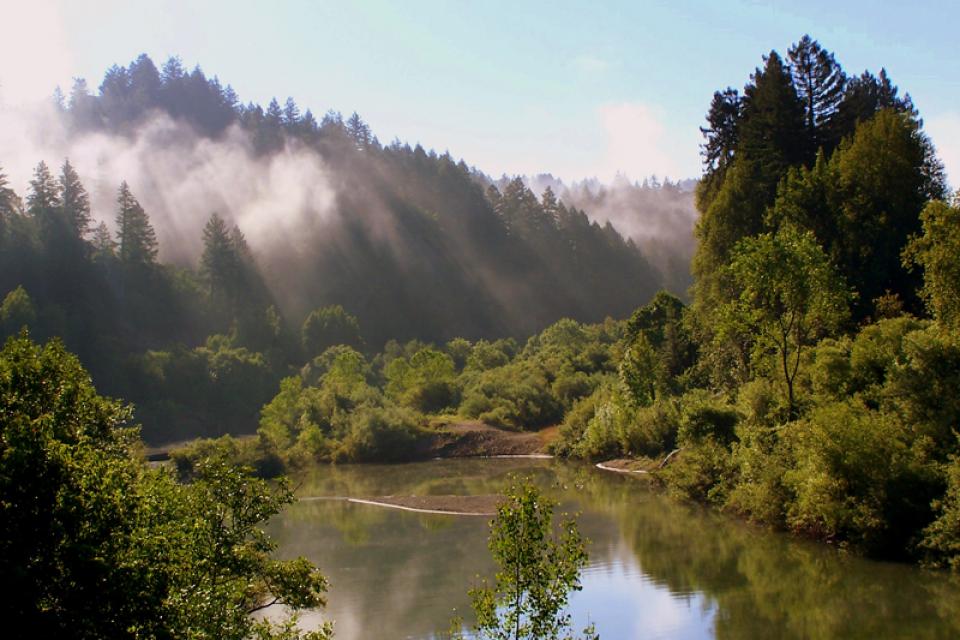North Coast Rivers
Also known as the Lost Coast, California’s remote north coast is home to mostly undeveloped rivers.
The Klamath, Trinity, Eel, Russian and Smith rivers are the major northern streams that drain this sparsely populated, forested coastal area that stretches from San Francisco to the Oregon border.
These rivers and their tributaries flow west to the Pacific Ocean and account for about 40 percent of the state’s total runoff.
The Klamath River is California’s second greatest river in terms of average annual flow— nearly 13 million acre-feet. Portions of the Klamath, Trinity, Eel, Smith, Van Duzen, Salmon and Scott rivers are protected from further dams and diversions under state and federal wild and scenic rivers acts passed in 1968 (the federal Wild and Scenic Rivers Act) and a similar wild rivers law passed by the California state legislature in 1972. The acts preserve rivers and sections of rivers, particularly those in undeveloped areas.
Aside from providing local water supply, these rivers are highly valued for sportfishing, white-water rafting and other forms of river recreation, and for the important spawning habitat they provide.
The Russian River is the most developed river in the area, where federally funded dams have created Lake Mendocino and Lake Sonoma. Locally built aqueducts channel water from these lakes into growing Marin and Sonoma counties. The dams, which trap the downstream movement of gravel, and commercial gravel mining in the river channel have reduced the amount of river gravel that would naturally help slow streamflow. A study by the State Coastal Conservancy has shown that swift flows and the narrow channelization of the river have lowered the river bottom more than 25 feet in some reaches, causing bank erosion, lowered groundwater tables and weakened bridge supports.
Following completion of Lewiston Dam in 1963, up to 90 percent of the Trinity River’s flow was diverted east into the Sacramento River basin at Clair Engle Lake, part of the Central Valley Project. Consequently, Trinity River salmon and steelhead runs declined by about 90 percent.
Authorized by Congress as a feature of the federal CVP, the Trinity River Diversion’s main purpose was to increase the supply of irrigation water for Central Valley farmers and hydropower production via tunnels to the Whiskey River.
In 1981, the Secretary of the Interior ordered diversions reduced by 219,500 acre-feet, and in 1986, Congress authorized the Klamath and Trinity River Basins Fisheries Restoration Act, a 20-year federal and state effort to restore the watershed’s fishery.
By early 1992, the Trinity River Hatchery had been modernized and habitat improvement projects were underway to restore native salmon populations.
The Trinity, the largest tributary of the Klamath River, is in the news again in 2013 as a part of updated proposals for the Bay Delta Conservation Plan. Under the proposal for tunnels in the Delta, some of the water for the tunnels would be from the Trinity River and thus draw down the reservoir at Trinity Dam.









